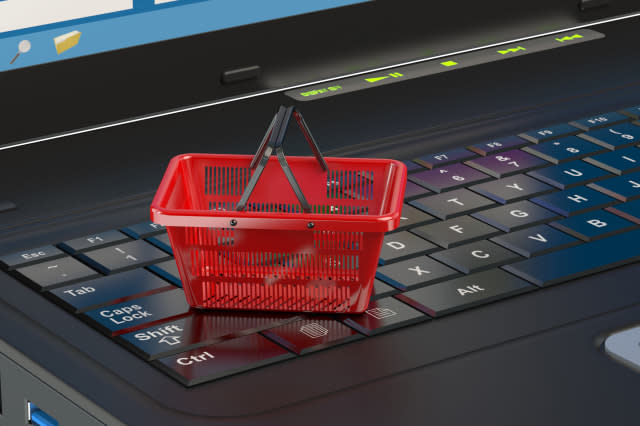70% of Brits can't spot if a website is safe: protect yourself

We have embraced online shopping. It now accounts for around 15% of everything we buy, and is up 10% in a year. So it's particularly worrying that we have so little idea about how to stay safe when we're buying online - and that 70% of people cannot identify whether a website is safe.
See also: New 'BT' scam: claims scammer is accessing your internet
See also: Nick Hewer reveals the tactics scammers use on the over 55s
See also: Scamwatch: six signs your internet date is a fraudster
A survey by Expressly found that 92% of us are aware that there are risks associated with online shopping: it's just that we don't actually know what to look for.
There are seven useful checks and precautions that can help keep us safe.
1. Fabrizio Fantini, Expressly Co-Founder, says one vital check is at the beginning of the web address. He explains: "One of the most immediate ways to check security at checkout is by looking for the 'padlock' symbol and 'https' (rather than 'http'; "s" stands for security) that usually appears in the browser web address bar. This certifies that the link between the user and website is encrypted. It is also a good clue that you've found a genuine store rather than an imitation of a famous store that may 'phish' for your payment details."
2. He also suggests asking friends and family for recommendations about the sites they use and trust, or stores linked to from other familiar sites. He says: "We suggest you purchase from sites recommended to you by reputable stores that you've previously shopped with before."
3. If you have not used a site before, it also makes sense to call customer services and ask a question. Fantini says: "Their answer is a good indicator of their overall service standards. Ensure they offer an agreeable returns and refunds policy."
4. It's also worth doing a web search about the company in question. Try searching for their name plus the word 'complaints' too, as it will reveal other customer experiences. If there is any doubt, then avoid the retailer - it's not worth taking a chance in order to save a few pounds here or there.
5. Choosing sites that recognise you and remember your details as opposed to those which have no information on you, is another way to increase online shopping safety. Fantini says: "If a store gives you the opportunity to save your payment details on their server for quick purchases in the future, it's best that you accept. Each re-type of your details can actually expose you to fraud, whereas stored payment details aren't transferred back and forth between the customer and the store."
6. When you track something down on a site you haven't used before, it's worth asking whether it's too good to be true. If this is an item that has sold out elsewhere, or is available at a vastly reduced price, then you need to be aware of the risks.
There are plenty of fake sites set up selling a sold-out must-have, which is purely a shopfront for fraudsters. Likewise, if the price is too good to be true, you need to ask yourself whether you can be sure you're not buying a fake. If in doubt, err on the side of caution.
7. Finally, it may be worth buying from your smartphone or tablet - rather than a laptop or desktop computer. Fantini explains: "The biggest risk of fraud is at the device level. Did you know that desktop computers are hacked more often than mobile devices? Tablets and smartphones tend to have more advanced security protections, so shopping on a mobile device is safer."
He says this may be an unfamiliar approach for older people - most of whom do all of their online shopping from a computer - however, getting to grips with shopping from your phone or tablet can help keep you safe.
But what do you think? Do you shop online, and are you sure you're taking enough precautions? Let us know in the comments.




